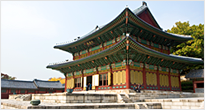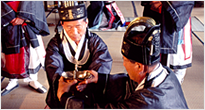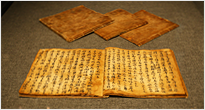UNESCO WORLD HERITAGE
UNESCO World Heritage of Korea
UNESCO World Heritage refers to both cultural and natural heritage sites registered on UNESCO World Heritage Centre’s World Heritage List. In November 1972, UNESCO adopted the “Convention Concerning the Protection of the World Cultural and Natural Heritage” during the 17th session of the General Conference. Under the convention, the World Heritage committee established a World Heritage List that includes cultural and natural heritages with outstanding value, whose conservation is recognized to be in the interest of all humanity. As of October 2010, Korea had nine cultural heritage sites and one natural heritage site.
In addition, UNESCO also has separate programs called “Memory of the World” and “Masterpieces of Oral and Intangible Heritage of Humanity.” Korea has seven items listed on the “Memory of the World” register and eight listed on the “Masters of Oral and Intangible Heritage of Humanity.”

- World Cultural Heritage Sites
- Korea’s cultural heritage conveys a genuine sentiment of simplicity and peacefulness. The historical background of its heritage is diverse, encompassing the history of Korea from ancient times (Dolmen sites) to the Joseon Dynasty. The sites embody a wide variety of value, from a tidy and neat artistic spirit to scientific rationality, as witnessed in such traditional constructions as royal palaces and temples.
A total of nine Korean cultural sites are registered on the list of World Cultural Heritage Sites including Jongmyo Shrine (1995); Haeinsa Temple Janggyeong Panjeon, the Depositories for the Tripitaka Koreana Woodblocks (1995); Seokguram Grotto Bulguksa Temple (1995); Hwaseong Fortress (1997); Changdeokgung Palace Complex (1997); Gyeongju Historic Areas (2000); Gochang, Hwasun and Ganghwa Dolmen Sites (2000); Royal Tombs of the Joseon Dynasty (2009); and, finally, Historic Villages of Korea: Hahoe and Yangdong (2010).

- World Natural Heritage Sites
- UNESCO designates World Natural Heritage Sites based on an objective evaluation of historic and academic value, and then assists in ensuring their preservation.
The volcanic island of Jeju-do has an outstandingly beautiful natural environment that is significant for its geological features and ecological value. In 2007, Jeju-do Island was listed as a UNESCO Natural Heritage Site under the name “Jeju Volcanic Island and Lava Tubes.” This includes Mount Hallasan Natural Reserve, the Geomunoreum Lava Tube System and Seongsan Ilchulbong Peak.

- Intangible Heritage of Humanity List
- An international assessment committee appointed by the UNESCO Secretary-General reviews the list of Masterpieces of Oral and Intangible Heritage of Humanity every two years with the mission of safeguarding and protecting intangible heritages such as language, culture, music, dance, games, myths, rituals, customs and handicrafts. A total of eight Korean intangible heritages are on the list, including: The Royal Ancestral Ritual in the Jongmyo Shrine and its Music (2001); The Pansori Epic Chant (2003); The Gangneung Danoje Festival (2005); Ganggangsullae (2009); Namsadang Nori Performance (2009); Yeongsanjae (2009); Jeju Chilmeoridang Yeongdeunggut Shaman Ritual (2009); and the Cheoyongmu (2009).

- Memory of the World Register
- Korea possesses scrupulous historical records and archives that have become profoundly valuable in the upholding of traditions and reflecting upon the political, social, economical, and cultural situations of long ago. These documents have been well preserved and as such, are precious assets to humanity.
The Korean documents registered under UNESCO’s Memory of the World include the Hunminjeongum Manuscript (1997); Joseon Wangjo Sillok (Annals of the Joseon Dynasty) (1997); Seungjeongwon Ilgi, the Diaries of the Royal Secretariat (2001); Baegun Hwasang Chorok Buljo Jikji Simche Yojeol (vol.II), the Second Volume of “Anthology of Great Buddhist Priests’ Zen Teachings” (2001); Printing Woodblocks of the Tripitaka Koreana and Miscellaneous Buddhist Scriptures (2007); Uigwe: The Royal Protocols of the Joseon Dynasty (2007); and Donguibogam: Principles and Practice of Eastern Medicine (2009).



 INTERNATIONAL
INTERNATIONAL